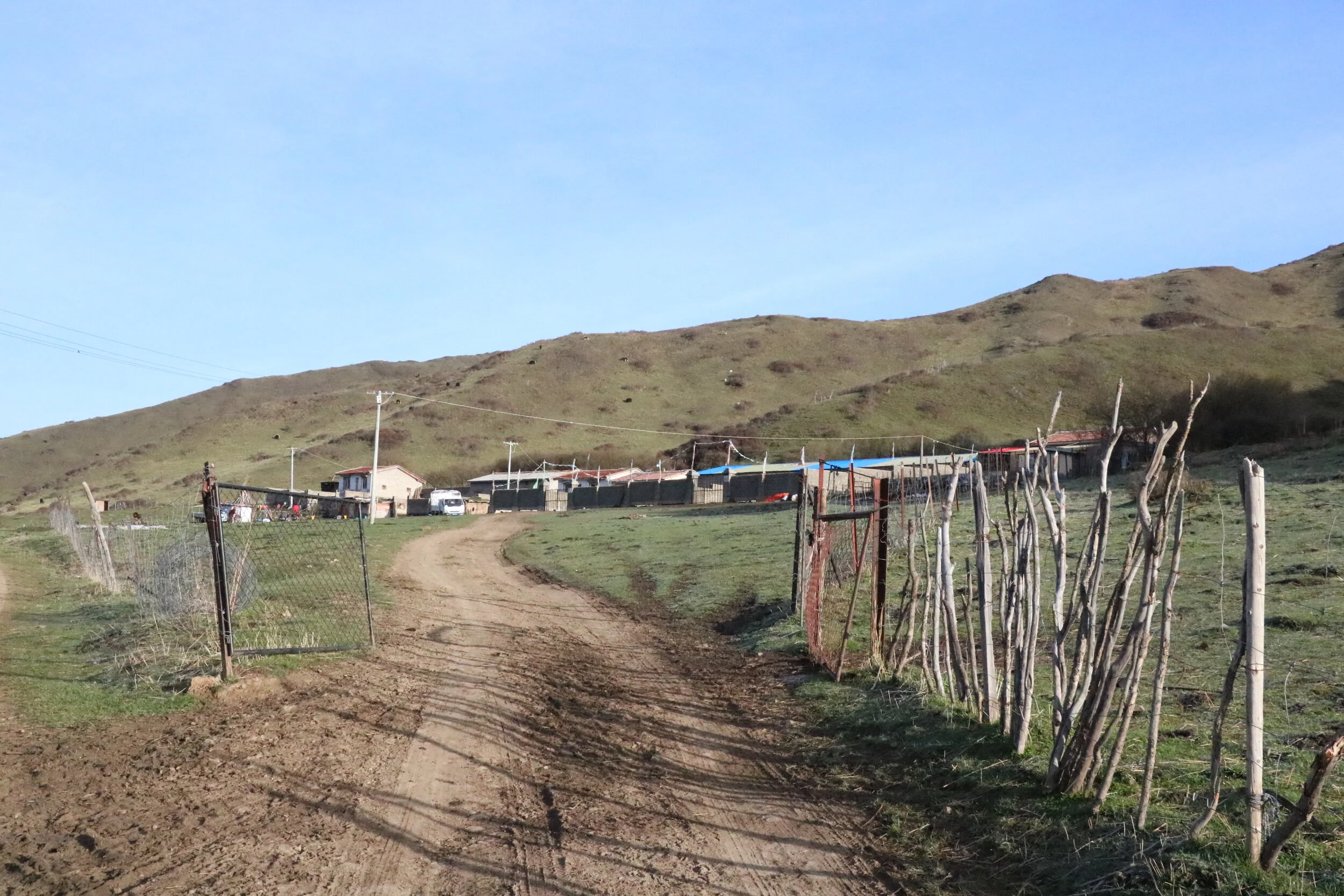
The mission
In spring 2018 I found myself accompanying a friend on an usual mission.
A lover of food and Tibet, Rob had recently founded a start-up to make yak meat jerky with the aim of cracking into the health foods market. He’d so far only needed small amounts of yak meat while perfecting the recipe and process, but was now looking to scale up production and needed a stable - and plentiful - source.
So with the help of a local friend, we found ourselves driving out of already-remote Hongyuan township to an even more remote countryside speckled with small farms and stupas. Here, we arrived at our destination for the morning.

When is a yak not a yak?
Despite how commonly we refer to them as “yak”, these domesticated animals technically aren’t that.
They are known properly as “dzo”, which is a cross-breed of yak and cow, making them easier to manage domestically while retaining the benefits of yak hair, milk, and meat.
True yaks are much larger, with a bulkier frame, and are only male - the female of the species are known as dri.

Still nomadic by name
One of the many developments brought by Chinese rule was permanent winter homes for nomads.
Throughout the winter months, when the ground is frozen and there’s little available pasture, families now have a permanent dwelling to return to. In Spring, when the grasses have grown again in the higher meadows, the family will pack up their tent and precious belongings into a truck and head back to the higher altitudes with their herd.
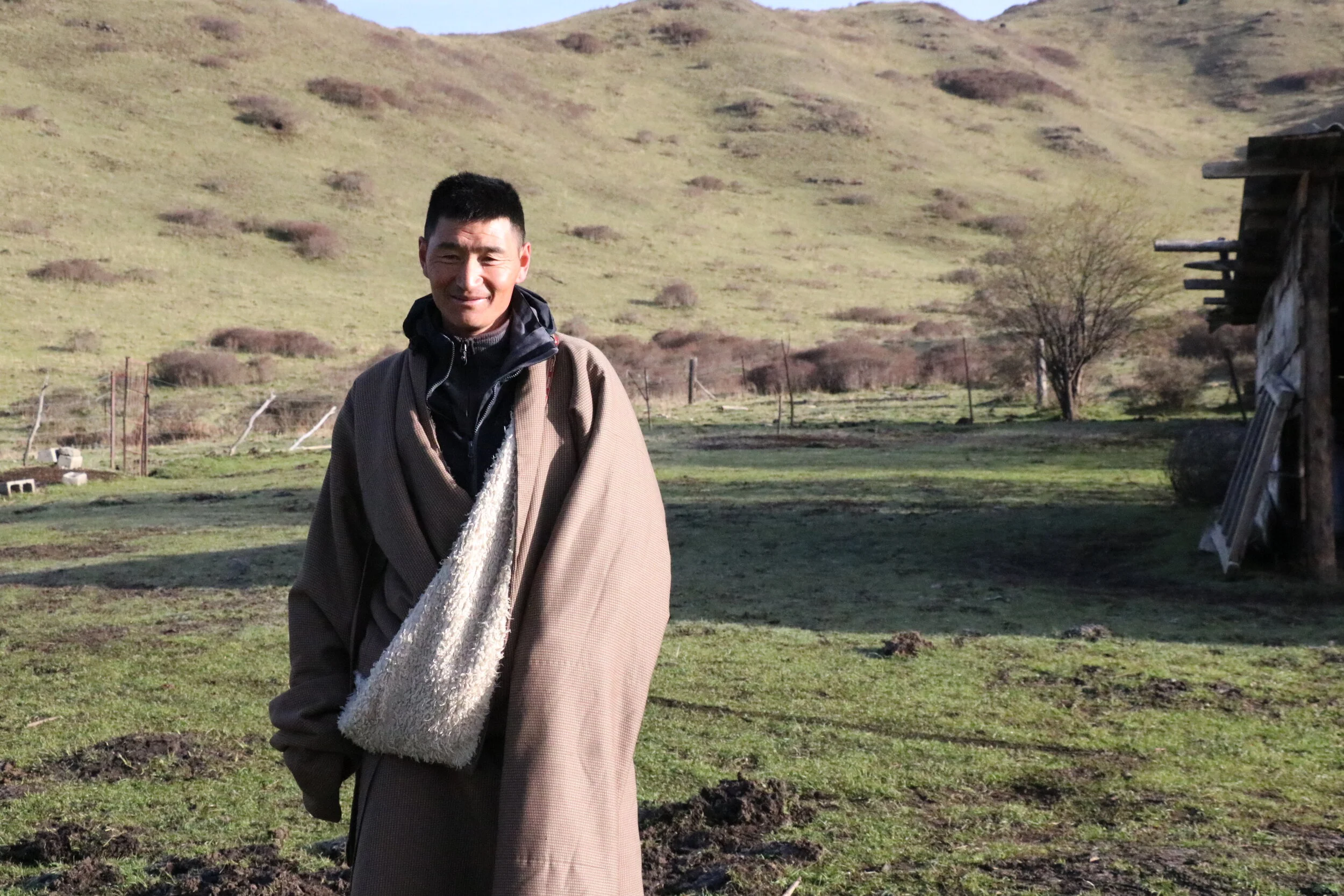
The nomadic chupa
By far the most comfortable and versatile item of Tibetan clothing, the chupa (choo-pa) varies from region to region and can usually be a good indication of where a person is from, and what they do.
A nomadic chupa is characterised by elongated sleeves (which serve like gloves in the cold) and an oversized pouch in the front, useful for storing a day’s food when out on the mountain, or keeping small animals and children safe.
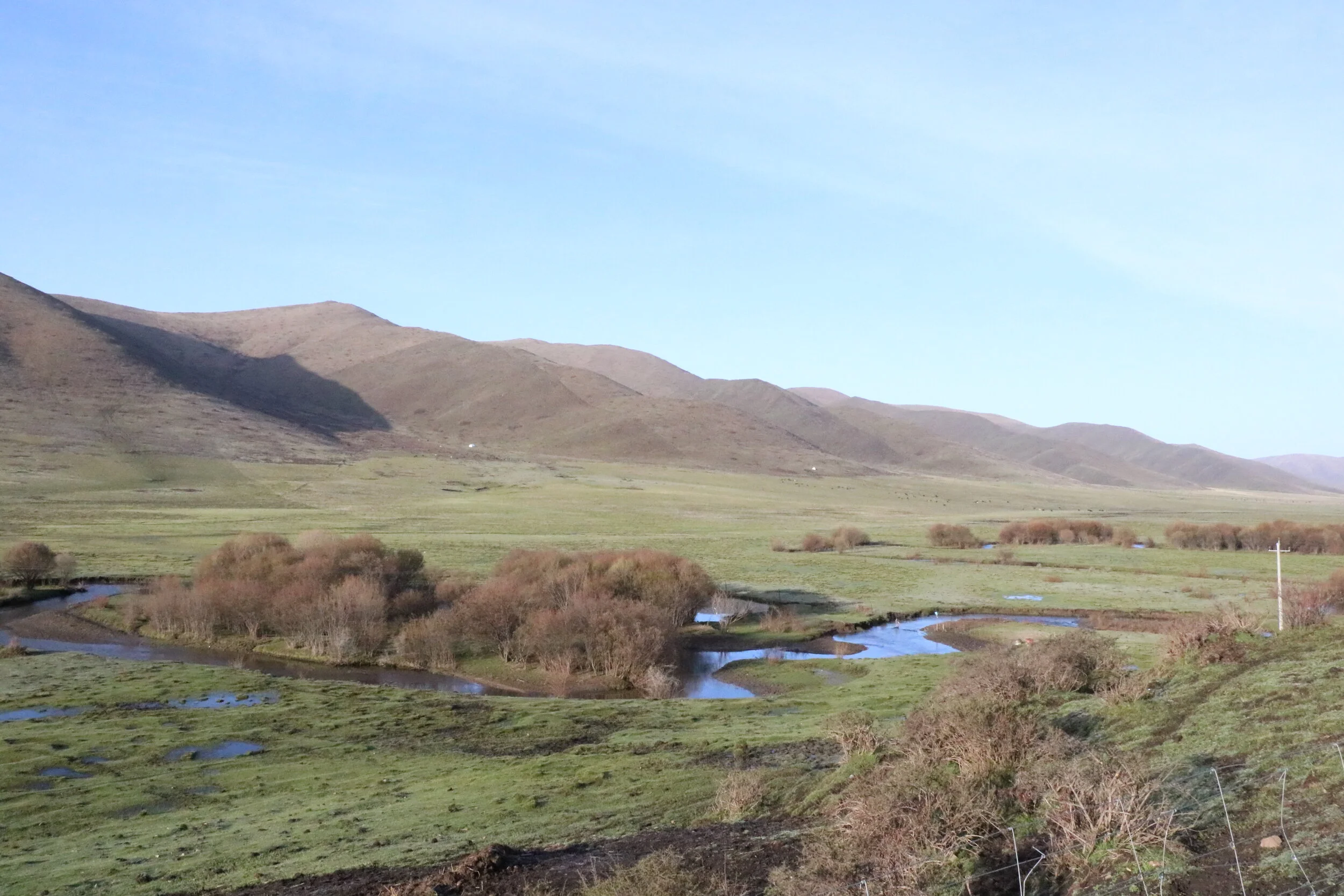
The communal valley
The wide, fertile winter pasture is sectioned off with invisible lines, agreed upon by each of the neighbouring families to ensure they all have good grass available for their herd, and no section suffers from over-grazing.
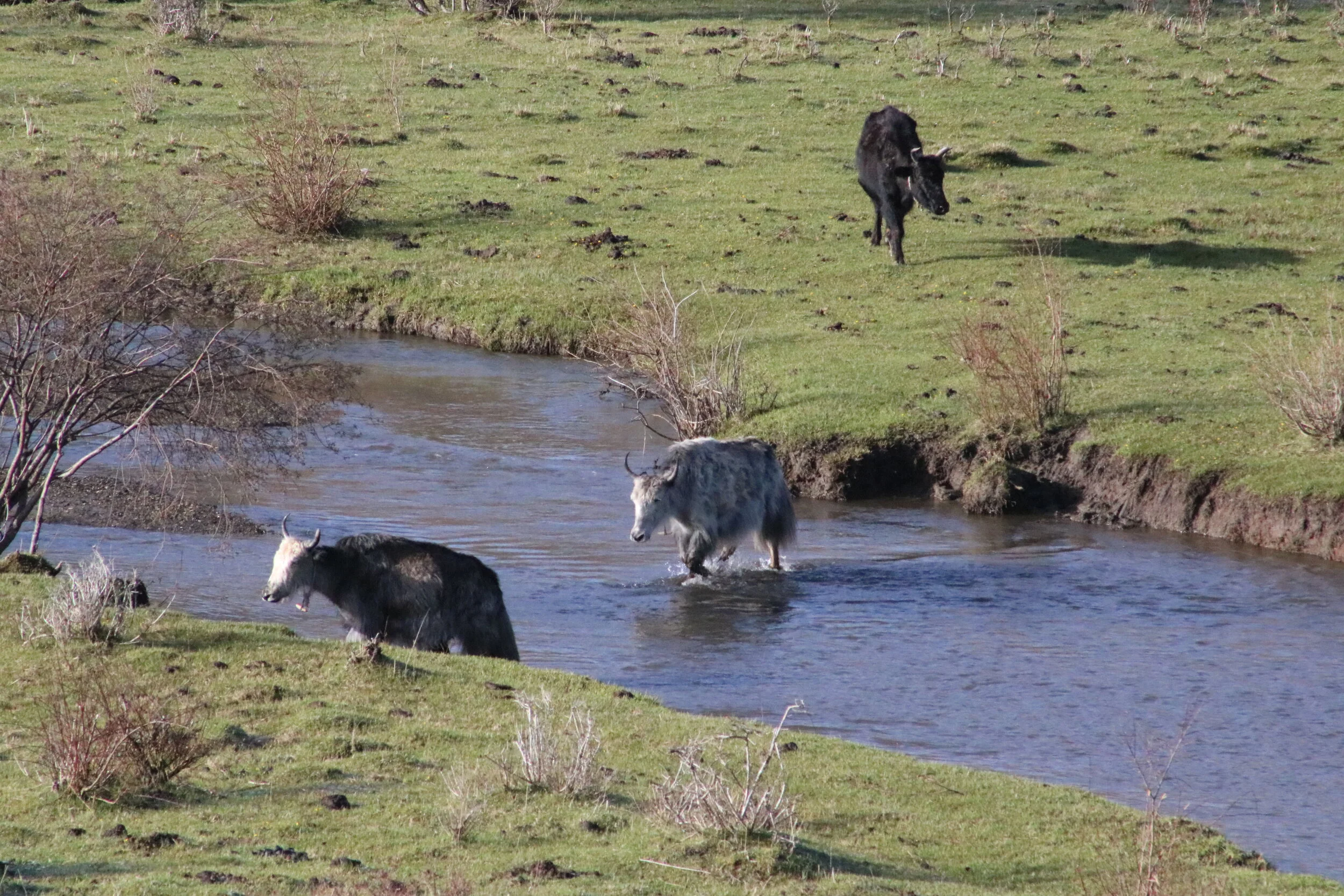
Freedom
In the valleys and on the mountain slopes the only fences are those along roads - and sometimes not even there. Yaks are mainly left to roam free, but it is the responsibility of the herdsman to keep check of where they are, and bring back any stragglers with a quick rock from his slingshot.
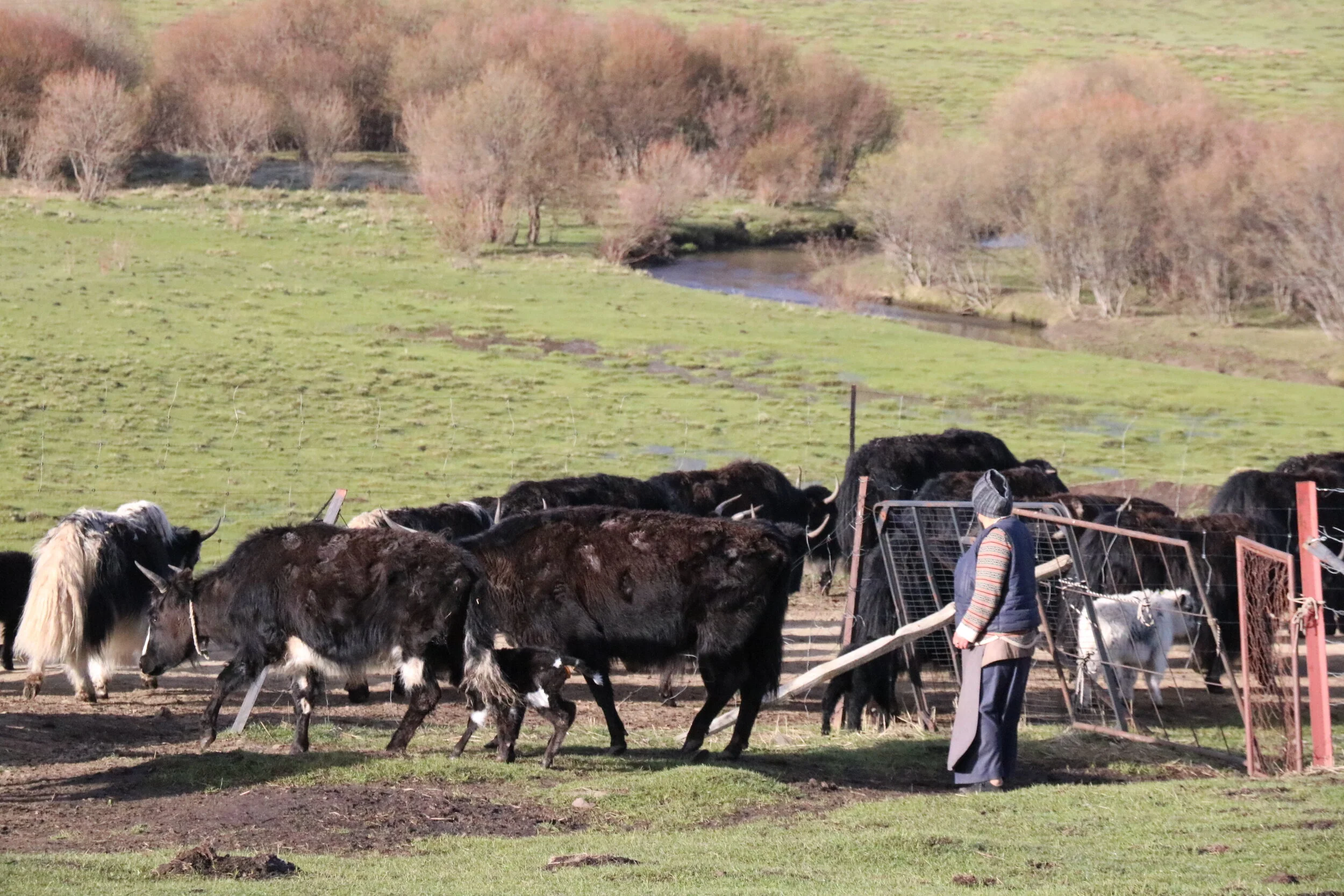
Sending them out
Each day for nomads starts and ends with their yaks - sending them out to pasture, and bringing them back in.
Families living near each other share resources to take care of their herds through the day, with family members taking turns to spend the day out on the hills.
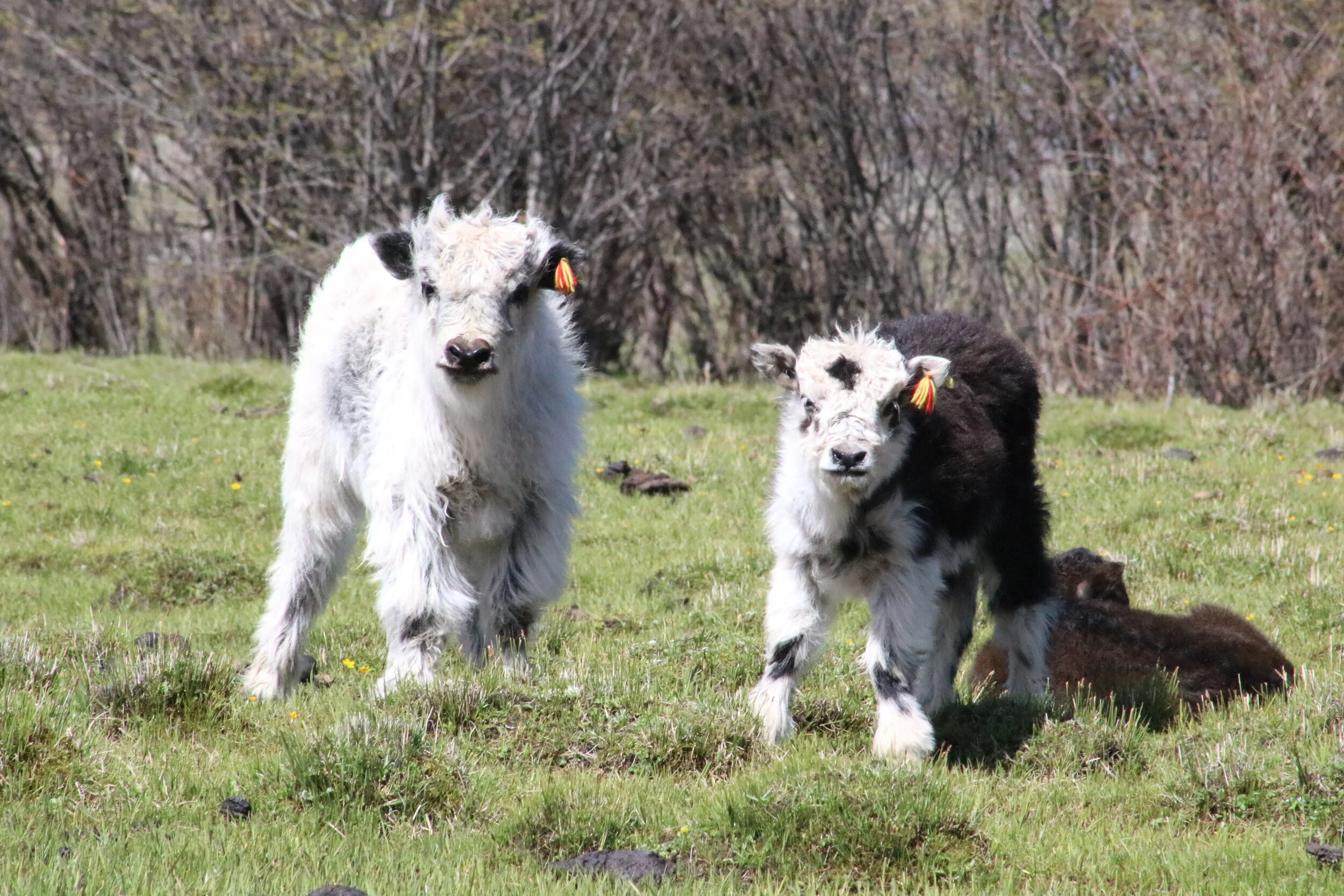
Norbu
In Tibetan language, norbu means “precious”.
Given their usefulness to Tibetans, it’s no coincidence that the term for baby yak is nor.
Also, aren’t they just precious?

Butter for breakfast
Back inside, breakfast is prepared from the Tibetan staples of tsampa and butter.
Tsampa, in the wooden box, is finely ground barley flour that for breakfast gets mixed with a knob of yak butter and hot black tea to form a dense and filling doughy ball.

Butter tea
A favoured drink of Tibetans (that disturbs many outsiders) is butter tea: black tea, boiled with a large chunk of yak butter and a dose of salt.
It’s rich and satisfying, filling like a soup, and has the added bonus of moisturising your chapped lips!

Digging in
Finally, after discussing the family’s yaks and tasting their butter, it was time to sample their meat.
Early spring is not the best time for yak meat - after winter, the yaks are thin and their meat has lost some of its richness. Many families will dry and store whole legs and sides of yak in late autumn, to eat over a period of months until the animals are plump and ready again in summer.
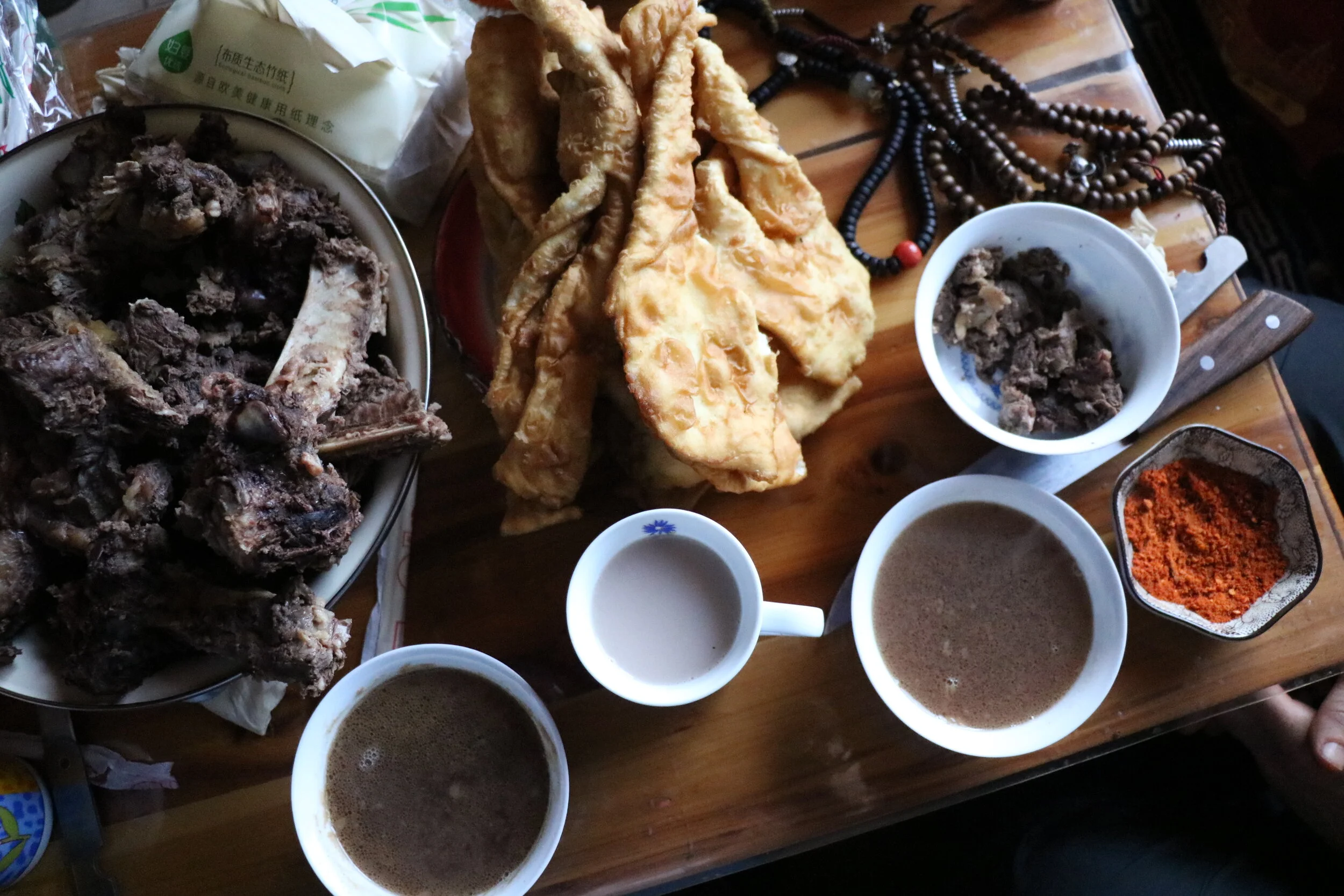
A feast for nomads
As guests, we were treated to a full feast of Tibetan delights - boiled yak meat, tsampa, butter tea, and fried bread - the bread being the only thing not derived from a yak.
I can only speak for the butter, but apparently the quality of the meat was excellent.

Mission accomplished
Rob and local friend Kush (far right and far left, respectively), with the pair of nomads (centre) who so generously let us into their home for the morning and shared their food with us.
Now, how to transport kilos of fresh yak meat from the middle of nowhere in Tibet to the other side of China?

Cutie.
He knows how cute he is.














